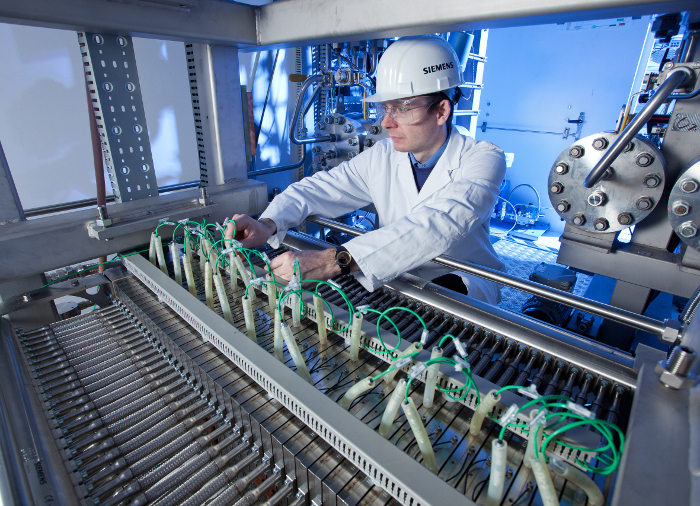A research group at the University of Houston has designed a new type of catalyst, which was demonstrated to reduce the voltage required to power water electrolysis, potentially solving many of the problems with producing hydrogen direct from seawater.
Water splitting with fresh water has been demonstrated at high efficiencies, and commercial applications already exist for the technology, which will likely play an important role in the transition to a cleaner energy system.
For seawater, which represents around 96% of the world’s total water resources, controlling the reaction is more challenging. Catalysts that can split hydrogen from water also tend to free other particles of sodium, chlorine and other elements commonly found in seawater, and these can settle on the catalyst, damaging its performance and causing electrodes to simply fall apart.
A previous paper published by Stanford University found that a negatively charged layer in the anode could effectively protect its core materials against chlorides found in seawater. The group at Houston, however, decided on a different approach and sought a catalyst that could achieve high current density at a low voltage.
Luo Yu, postdoctoral researcher at University of Houston, notes that the voltage is important because hydrogen can be produced at 1.23 V, while chlorine requires a voltage of at least 1.73 V. So a device that produces industrially required density at a voltage between these two is highly desirable.
The oxygen evolution reaction catalyst designed by the group, described in Nature Communications, relies on transition metal-nitride, with nanoparticles made of a nickel-iron-nitride compound and nickel-molybdenum-nitride nanorods on porous nickel foam.
This catalyst was integrated into a two electrode electrolyzer. Combined with a hydrogen evolution catalyst consisting of nickel-molybdenum nanorods, the device achieved current densities of 500 mA at 1.608 V, and 1000 mA at 1.707 V in natural seawater at a temperature of 60 degrees Celsius, which the group claims is a record low.
“This discovery represents a significant step in the development of a robust and active catalyst to utilize the world’s abundant seawater feedstock for large-scale hydrogen production by renewable energy sources,” the researchers claim in Nature Communications.
This content is protected by copyright and may not be reused. If you want to cooperate with us and would like to reuse some of our content, please contact: editors@pv-magazine.com.




I am impressed with the advances that the
University has made with the production
Of hydrogen from seawater. I would like to
Contribute to the generation of electricity
For the electrolyzer. There is a technology
Known as the Decentralized Hydro Plant
That can do this cheaply and effectively
247=365.
It is amazing discovery of separation of hydrogen from sea water by electrolysis by catalyst Nickle Iron nitride or Nickle molybdenum nitride at 6oc.
But there is question?
How is this possible to save hydrogen from combustion at this condition and is it possible to separate oxygen at the same time from hydrogen in a cell while using nano catalyst.nano catalyst has novelistic properties.
How is this possible to save from formation of free radicals.?
Is this possible? That
This can be applied in generating electric current renewable energy for driving vehicles as solar cell.
Prof. Rafiq
Pakistan
Email: mrafiqbhatti@gmail.com
Cell.+92 3099614213.
It’s very awesome achievements. But my question is same as prof Rafiq ask.
Chaudhary Muhammad Tayyab Hussain Chauhan
East China University of Science and Technology Y10190016@mail.ecust.edu.cn
WeChat: 18516642887